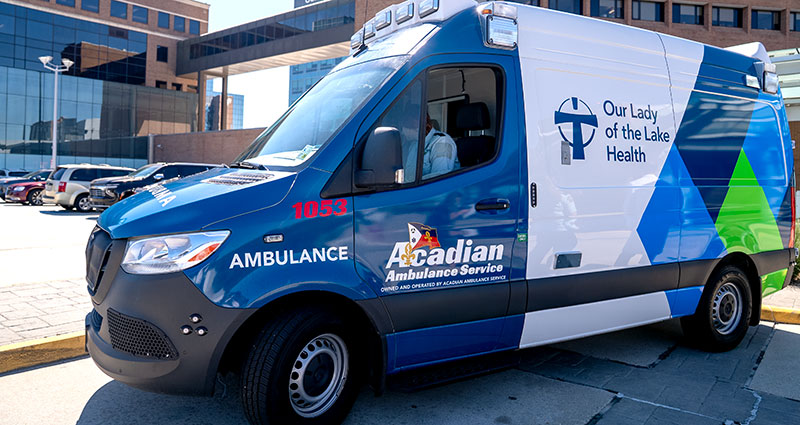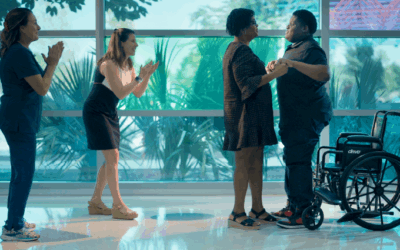When you’re having chest pain or think you might be having a heart attack, your first instinct may be to get to the hospital as fast as possible. But that’s exactly the moment when you should NOT get behind the wheel.
Calling 911 can make the difference between life and death.
According to Federico De Puy, MD, cardiologist with FMOL Health | Our Lady of the Lake, during a heart attack, the heart’s normal rhythm can become unstable, sometimes causing a person to lose consciousness without warning. That’s why driving yourself, or letting a loved one drive you, is so dangerous. A sudden loss of consciousness behind the wheel could easily lead to a crash before you ever reach the hospital.
Instead, Dr. De Puy has a simple message for people who suspect they or their loved ones may be having a heart attack: Survive. Don’t Drive. Call 911.
Life-Saving Care Starts the Moment You Call
The moments after a heart attack begins are some of the most critical. Calling 911 doesn’t just get you a ride to the hospital. It activates an entire emergency response system that starts working for you right away.
While you’re on the way to the hospital, paramedics begin treatment that can save your life before you even arrive. They can start an IV and immediately give life-saving medications that can help restore blood flow, reduce pain and prevent further damage to the heart. It’s care you simply can’t provide for yourself from the driver’s seat.
Emergency medical teams can also perform diagnostic tests in the field that speed up your treatment once you arrive at the hospital.
Once paramedics evaluate you, they can perform an electrocardiogram (EKG) right in the ambulance to confirm whether you’re having a major heart attack. That information is then transmitted to the hospital instantly.
Cardiologists, emergency physicians, and catheterization lab staff receive an alert that a heart attack patient is inbound. By the time the ambulance arrives, the team is ready and waiting.
“We have our entire cath lab staff waiting,” he says. “The patient goes straight from the ER arrival area to our cath lab. They don’t stop in a room or go through a waiting area. A lot of the delays are taken out of the way.”
By the time you arrive, everything is ready to begin restoring blood flow to your heart as quickly as possible.
Every Minute Counts
When it comes to heart attacks, Dr. De Puy explains, the saying “minutes are muscle” holds true. The longer that blood flow to the heart is blocked, the more muscle tissue dies. That’s why those first few minutes, before you even reach the hospital, are so critical.
“Even those 15 or 20 minutes can make a difference,” Dr. De Puy says. “The more minutes that you waste, the more heart muscle cells that could be dying.”
If your heart rhythm becomes dangerously irregular while you’re driving, you could pass out or go into cardiac arrest before reaching the hospital. In an ambulance, however, you’re in the care of trained professionals who can perform CPR or use a defibrillator to restart your heart immediately if it stops.
“Paramedics can shock your heart, they can do CPR. You have someone who’s taking care of you,” Dr. De Puy says.
A Decision That Saves Lives
Whether it’s you or someone you love, the safest move during a suspected heart attack is clear: call 911. The sooner emergency responders arrive, the sooner treatment begins, and the better your chance of survival.
“Survive. Don’t drive,” Dr. De Puy says. “It’s that simple.”




